This blog post, in addition to a forthcoming analysis paper on the same subject, are based on the author’s trip to Afghanistan in July 2017.
In a prime-time speech to the nation last week, President Trump announced a set of decisions on U.S. policy in Afghanistan that are largely correct. Staying in the country with a somewhat enlarged military capacity is the least bad option amidst difficult choices.
But although his approach contains many good elements, his de-emphasis on the need for significant improvements in Afghan governance and political processes is deeply misguided and could be a fatal flaw in the strategy. Even as senior U.S. officials sought to reemphasize the need for improved governance after his speech, his “no-nation-building” words will not be easily erased and send a very wrong signal to Afghan politicians.
As such, the Trump administration’s announced approach to Afghanistan is not a strategy for victory. The United States must start explicitly insisting on better governance and political processes in the Afghan government.
In Afghanistan
The security situation in Afghanistan remains worrisome, with a significant deterioration since 2013. There have been persistent, long-known problems within the Afghan security forces: poor leadership quality, ethnic and patronage fractures, corruption, logistical shortcomings, and other support deficiencies (such as in medevac). In spite of these difficulties—not to mention high casualty rates among Afghan security forces—the economic downturn since 2013 has helped sustain recruitment. Meanwhile, recent replacements of top military leaders are a very important step forward, but its effects are yet to be seen.
The Taliban has not been able to hold cities, but it has demonstrated an ability to take over districts. Its informal control permeates significant portions of Afghanistan, and despite some internal fragmentation, momentum has been on the Taliban’s side. The group is nowhere close to being defeated. As such, it continues to show little interest in serious negotiations (even less so after the killing of its former leader Mullah Akhtar Mansour in 2016).
Growing insecurity in Afghanistan goes beyond the Taliban, as well as beyond its affiliate, the Haqqani network, and the rival sectarian Islamic State. Palpable decreases in security—including pervasive kidnapping and extortion, even in major cities such as Kabul—are linked to assorted actors, including the Afghan security forces. At the same time, ethnic tensions have grown significantly and have become more likely to explode into violence.
This all comes at a time of continuing dysfunction in Afghanistan’s political system. Crucial governance reforms that the vast majority of the Afghan people expected from the National Unity Government of President Ashraf Ghani and CEO Abdullah Abdullah have been creeping and sporadic. As Afghan politicians continue to engage in scheming, crisis-generation, and brinkmanship to milk concessions from the government and political opponents, the government’s legitimacy and political bases have weakened substantially. In this climate, necessary governance efforts are always pushed to the side.
In the region
At the same time, the regional security environment has deteriorated.
President Trump called for greater Indian engagement in Afghanistan in order to pressure Pakistan to stop its safe havens for the Taliban and the Haqqani network. But the India card can easily backfire, as Pakistan’s India paranoia may induce it to do more of what the United States does not want. Other U.S. coercive pressure on Pakistan, such as further scaling down military or even economic aid, imposing sanctions designations against Pakistan, listing Pakistan as a state-sponsor of terrorism, or waging U.S. drone attacks in Pakistan have significant limits. Pakistan has ways to retaliate against the United States, Afghanistan, and India: undermining the security of U.S. interests in Pakistan, provoking border instability in the Punjab, or shutting down the Afghan-Pakistan border for U.S. military logistics or Afghan trade. And, fundamentally, as U.S. officials emphasized after President Trump’s speech, the United States maintains a vital interest in Pakistan’s nuclear weapons strategy and command and control; yet another limit on how much the United States can pressure Pakistan.
There is little prospect that increased U.S. pressure will cause Pakistan to sever its ties with the Taliban and Haqqani network. Nor, despite U.S. and Afghan hopes, has China delivered that pressure so far. There are no indications that it is about to do so. Instead, Pakistan will likely temporarily reduce its level of support Afghanistan-oriented militant and terrorist groups and ramp it back up later on. A fundamental reassessment of Pakistan’s strategic posture, internal security, and power calculations would most likely have to be the result of deep and far-off internal changes. The United States can promote such deep internal changes only at the margins.
Iran and Russia, because of growing doubts about the survivability of Afghanistan’s government, have come to partially support the Taliban as a hedge should the Taliban control parts of the country. They also support the Taliban as a tool against the Islamic State. However, since their support is also aimed at countering the United States, it’s not clear that the sustained U.S. presence would prompt them to stop that support.
U.S. interests in Afghanistan
The principal objective of U.S. policy in Afghanistan since the 9/11 attacks, which President Trump rightly reiterated in his speech, has been to ensure that the country does not become a haven for virulent Salafi terrorist groups like al-Qaida. Despite a scholarly debate about how much the Taliban would support al-Qaida’s operations in Afghanistan today, the presence of contested areas in which the Afghan government has limited reach has allowed al-Qaida to re-establish itself in Afghanistan and permitted the growth of the Islamic State there.
However, U.S. interests in Afghanistan go beyond combating terrorism. An unstable Afghanistan risks also destabilizing a nuclear Pakistan, not just vice versa, which in turn could destabilize the entire region of Central and South Asia.
Finally, the U.S. reputation and self-regard as a country that can be relied upon to honor its commitments are at stake in Afghanistan. An outbreak of outright civil war in Afghanistan would also bring a humanitarian catastrophe.
The best of 3 bad options in Afghanistan
As President Trump was assessing U.S options in Afghanistan, he was looking at essentially three options: full military withdrawal, limited counterterrorism engagement, and staying in the country with slightly increased military deployments and intense political engagement.
The first would have precipitated an order-of-magnitude deterioration of security in the country and posed a serious threat to all U.S. interests there. The Taliban would come to control large portions of Afghanistan’s territory outright, while a fragmented civil war between and among the Taliban, its ethnic opponents, and Pashtun rivals would rage elsewhere. Terrorist groups would have a freer hand to operate and plot regional and global attacks.
Under the second strategy, the United States would liquidate its anti-Taliban operations and conduct counterterrorism operations from Afghanistan against al-Qaida, the Islamic State, and potentially other terrorist groups with global reach. But this approach ignores that terrorist groups can resurrect themselves and disincentivizes Kabul to allow the United States to maintain military bases in Afghanistan (because they’d contribute little to the country’s security and in fact undermine the Afghan government’s ability to reach a possible accommodation with the Taliban and Pakistan).
The remaining alternative, the least bad strategy and the one that President Trump chose, was to stay in the country with a slightly increased U.S. force posture. Importantly, the slight increase in U.S. military deployments should be in the form of U.S. soldiers, not contractors, who have a problematic record in Afghanistan, are unpopular there, and have limited accountability.
Although the increase helps to avoid an outright disaster, the indicated force augmentation is not a strategy for victory. Unsatisfactory as it is, however, there is currently no strategy for victory.
Maintaining support for the Afghan government and people buys time in the hope that eventually the Taliban will self-destruct, leading it to either engage in negotiations or some sort of accommodation, or wither on the battlefield. Indeed, Secretary of State Rex Tillerson and other senior U.S. officials have explicitly stated that the goal of the U.S. military presence is to drive the Taliban to the negotiating table and dispel its assumption that the group can achieve a military victory or wait out the United States.
Enter: Governance considerations
Most critically, the U.S. military strategy needs to be resolutely coupled with explicit and sustained emphasis on better governance and political processes in Afghanistan. Without significant improvements in these areas, military gains will be eviscerated and the Taliban will remain entrenched.
President Trump’s under-emphasis in his speech on governance counterproductively encourages Afghanistan’s existing governance deficiencies and critical misbehavior by Afghan politicians. Senior U.S. officials have sought to mitigate his statements since then, emphasizing the need for governance improvements in Afghanistan—including supporting credible parliamentary and presidential elections, tackling corruption, and instituting inclusive governance structures. They point to existing Afghan commitments to that effect, such as the Kabul Compact. These comments are steps in the right direction, as the administration must insist on accountability from the Afghan government and from Afghan politicians. All parties must recognize that governance failures are the key reason the Taliban has so much staying power and replenishment capacity.
Two upcoming political events in Afghanistan will be important:
- The long-delayed 2018 parliamentary elections can provide an opportunity to reach out to various Taliban sympathizers to support more moderate Taliban participation. Over some years, this could both divide the Taliban and show its more moderate elements that some political accommodation could be achieved, as happened with Hezb-e-Islami and Gulbuddin Hekmatyar. Such gradual political participation could also serve as a precursor to more systematic peace negotiations in the future.
- Looking ahead to the 2019 presidential elections—which could easily bring another prolonged and costly political crisis—Washington should assess what role, if any, it will play in handling a crisis.
Finally, three possible tripwires should lead the United States to fully liquidate its military engagement: 1) full-blown ethnic fragmentation of the Afghan security services and internal fighting or massive defections; 2) ethnic infighting breaking out on a substantial scale in various parts of the country; or 3) a prolonged political crisis after the 2019 presidential elections leading to either a coup d’état or the Taliban taking sustained control of several provinces.
Absent such developments, there are still crucial interests to protect and good reasons to stay and keep supporting the Afghan government and military forces, while promoting better governance and pluralization. The United States must be explicit that its support is not an open-ended carte blanche—not just in terms of Afghan military and economic contributions, as President Trump stated, but also in matters of governance. Indeed, contrary to President Trump’s de-emphasis on governance issues in Afghanistan, the United States must explicitly insist on significant improvements in Afghan governance and political processes and make it the core of U.S. policy.
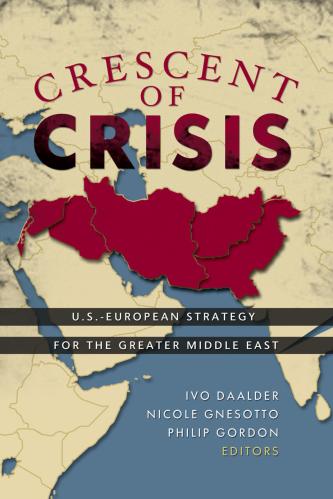

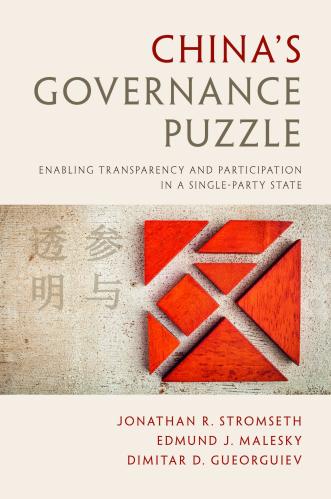

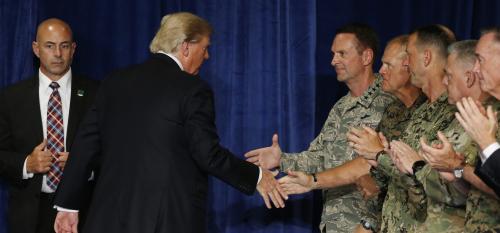
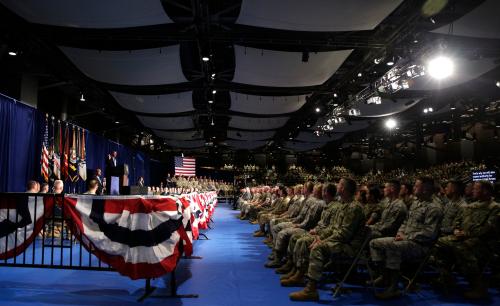

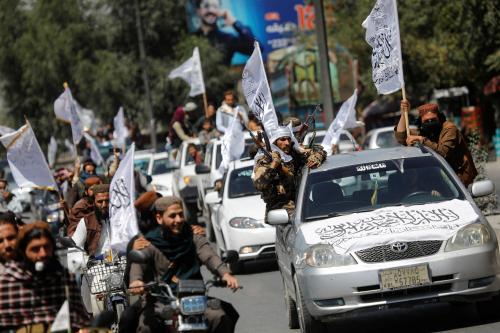
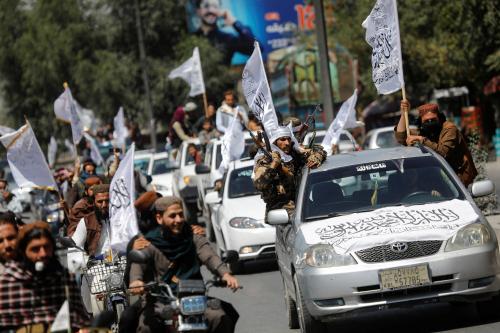
Commentary
The fatal flaw in President Trump’s approach to the war in Afghanistan?
August 29, 2017